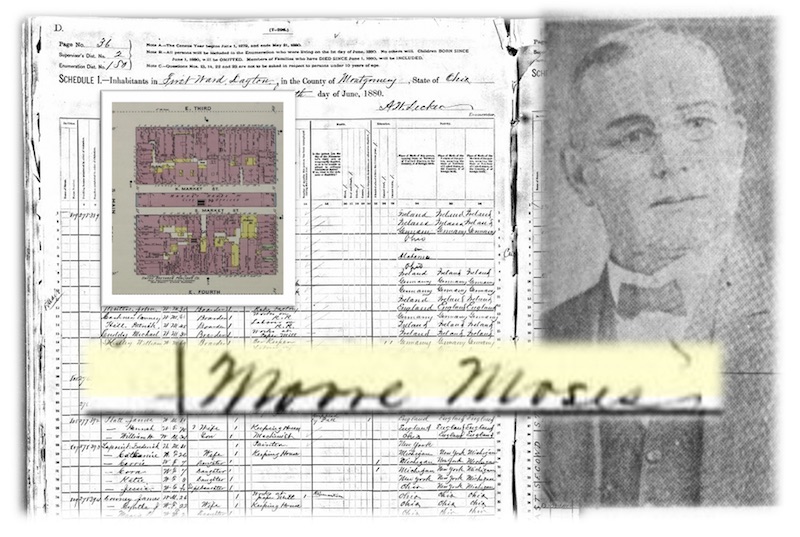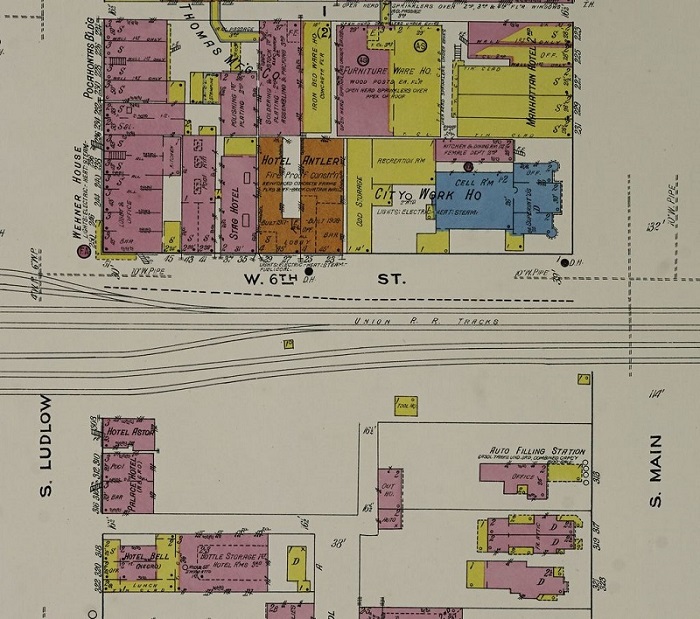University Libraries

Moses Moore: Building Portfolio
By Heidi Gauder
Part 5 of 6 in a documentary biography of Moses Moore, who became known as the wealthiest Black man in Dayton in the late 1800s. Librarian Heidi Gauder pieced together his history from census records, maps, newspaper clippings and local histories. You can read the other installments on the Roesch Library blog:
- Moses Moore: A Documentary Biography
- Moses Moore: Political Action
- Moses Moore: Business Grows
- Moses Moore: Entertainment and Sports
- Moses Moore: Community Needs
In the 1910s, Moses Moore engaged in myriad business and real estate transactions. In January 1910, the African American business community organized the People’s Loan and Benefit Association “for the benefit of colored people only,” with Moore as its president. Twelve months later, he purchased the land and building at 43 W. Sixth St. with plans for a business on the first floor and a billiard room and offices on the second floor. In October, he purchased the Mallory Hotel at 314 S. Ludlow St. following the death of its proprietor, Robert Mallory, and leased it to Harry Gardner, formerly of the New Marco Hotel. In 1913, Moore acquired the Dayton Record, an African-American weekly newspaper at 41 W. Sixth St.; the man hired to run the newspaper, John Rives, would go on to establish the Dayton Forum, a weekly African American newspaper that built the largest circulation among Black newspapers in Ohio before closing down in 1949.*
Throughout the rest of the decade, Moore continued to be involved in real estate transactions, primarily building permits for houses on Lakeview Avenue and Germantown Street. By 1914, he and his wife had moved to 59 S. Horace St., a house that is still standing.
During this decade, newspapers detailed Moore’s civic engagement work as well. In August 1912, the city hosted the national convention for the Grand Lodge of Colored Elks, of which Moore was a member. The story provides one of few images of Moore, who is listed as a prominent Elk, as well as some of the few words attributed to him directly. In his explanation of why the Elks convention would not be hosting Jack Johnson, world heavyweight boxing champion and possible Elks member, he said: “I have nothing against Johnson personally, but the organization is not committed to the business of boosting sluggers and men of similar callings.” In 1914, the Dayton Herald announced a forthcoming African American Republican rally at the Mallory Hotel (which Moore had acquired by then) and included Moore among the rally hosts. Moore also hosted a meeting at his house in 1915 to plan for a visit by Monroe Trotter, an activist for African American civil rights; the Dayton Herald described it thusly: “Anti-segregation meeting is held.”
* https://chroniclingamerica.loc.gov/lccn/sn84024234/
— Heidi Gauder is a professor in the University Libraries and coordinator of research and instruction. In locating records and information about Moses Moore and his family, she received assistance from Suzanne Dungan, Paris-Bourbon County (Kentucky) Public Library; Shawna Woodard, Special Collections, Dayton Metro Library; and Amy Czubak, Montgomery County (Ohio) Records Center and Archives. View the sources used in this series.

Sixth Street
West Sixth Street. Moses Moore purchased the properties at 41 and 43 W. Sixth St. Sanborn Fire Insurance Map from Dayton, Montgomery County, Ohio. Sanborn Map Co., to 1932 Vol. 1, 1918. Map. https://www.loc.gov/item/sanborn06671_005/.
Sixth Street

